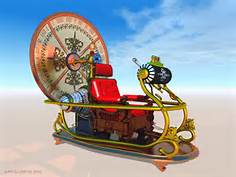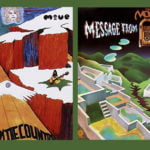It’s the time of year for saving money!
Over the years, I have heard from more than just a few usually-reliable industry sources that, near the peak of their career, the Grateful Dead had worked, secretly but seriously, and for some extended period of time, with an agency of the US Federal Government toward achieving actual time travel. Yeah, Time Travel, the same thing that H.G. Wells had written about in his 1895 novel The Time Machine, only without the Morlocks, the Eloi, and the fancy machinery.
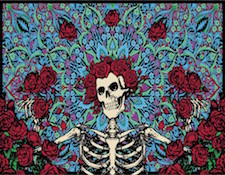 Although I’ve heard various agencies named, the one most commonly said to have sponsored, funded, and participated in this project was the CIA. And the theory behind the project was simple: Just as the I Ching (the Chinese “Book of Changes”) is based on the belief that every action or inaction creates a new universe (the universe in which that action was or wasn’t taken) and that if you can know the causative action or inaction, you can know all else about that universe, so the Grateful Dead and their spook sponsors were said to have believed that if you could EXACTLY reproduce the sound of an event, you could be transported ― even without the flashing lights, the spinning “umbrella-dealie”, and the lovely Victorian chair ― back to become part of the event, itself.
Although I’ve heard various agencies named, the one most commonly said to have sponsored, funded, and participated in this project was the CIA. And the theory behind the project was simple: Just as the I Ching (the Chinese “Book of Changes”) is based on the belief that every action or inaction creates a new universe (the universe in which that action was or wasn’t taken) and that if you can know the causative action or inaction, you can know all else about that universe, so the Grateful Dead and their spook sponsors were said to have believed that if you could EXACTLY reproduce the sound of an event, you could be transported ― even without the flashing lights, the spinning “umbrella-dealie”, and the lovely Victorian chair ― back to become part of the event, itself.
I have no idea whatsoever if this story is true, as a whole or in any part, but we all know that the Grateful Dead were fanatical about the quality of their sound; it’s easy for us to imagine any number of uses that the government could find for Time Travel; and two-and-a-half thousand years of Chinese have devoutly believed in the I Ching, so it COULD be true.
The key to success for the project – if, indeed, any such project ever actually existed – was to reproduce the sound of some selected event (Woodstock, for example, the coronation of Henry VIII, or the assassination of Julius Caesar) so precisely, in even the most minute detail, that, for all intents and purposes, you would have not just portrayed it, but DUPLICATED it. And then – if the sounds of the original and the duplicated event were sufficiently identical, you would – by a phenomenon presumably similar to that in quantum physics where identical photons or electrons effectively are each other and can therefore be in two or more places at the same time ― find yourself actually AT the target event.
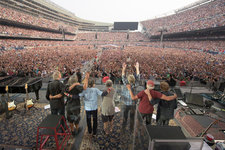 Other than wondering whether your presence at the event would (a la Bishop Berkeley, Heisenberg, and the “Observer Effect”, change the event and undo the whole process, or how, once you got there, you could ever get back, the idea sounds like fun, and there are any number of places/events that I would personally enjoy visiting/participating in. That’s NOT what we do in hi-fi, though. Although I have often written that what I want my system to do is to “transport” me to the venue my music was recorded in, I don’t actually expect, and probably wouldn’t even want, that to really happen. Neither do I want (as is apparently the dream of “The Man-In-The-Street”) to have the performers actually crowd into my listening room to play for me.
Other than wondering whether your presence at the event would (a la Bishop Berkeley, Heisenberg, and the “Observer Effect”, change the event and undo the whole process, or how, once you got there, you could ever get back, the idea sounds like fun, and there are any number of places/events that I would personally enjoy visiting/participating in. That’s NOT what we do in hi-fi, though. Although I have often written that what I want my system to do is to “transport” me to the venue my music was recorded in, I don’t actually expect, and probably wouldn’t even want, that to really happen. Neither do I want (as is apparently the dream of “The Man-In-The-Street”) to have the performers actually crowd into my listening room to play for me.
What we’re really trying for in hi-fi is an entertaining musical or auditory illusion that, like good “special effects” in a movie, will help us to enjoy whatever we’re listening to; and maybe even provide the occasional moment when the effects are SO good that we can marvel at them and think how well and wisely we spent our money.
Hi-fi ― even the most esoteric, advanced, or violently expensive High-End hi-fi ― isn’t intended to produce any reality other than the reality of our own enjoyment. Duplicating the original recorded moment, time-travel-style, definitely ISN’T what we’re trying to do. Although when talking about audio, we speak of sound “reproduction”, perhaps a better term might be sound “approximation”, because that’s all we’re ever likely to get: Without government billions to set-up the ideal circumstances and acoustics for each single recording we might ever play, we’re never going to get sound that really sounds like the original event, and we know it.
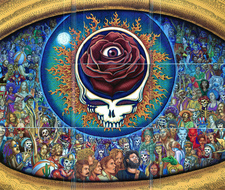 OUR audio gear is not ― as (if it existed) the Time Travel Project’s must have been ― a scientific tool for recreating another time. Instead, it’s a tool for doing stage magic for ourselves and perhaps a friend or two and, if it works, fooling us for a moment into believing that we are somewhere that we are not, listening to musicians and other performers that are not there.
OUR audio gear is not ― as (if it existed) the Time Travel Project’s must have been ― a scientific tool for recreating another time. Instead, it’s a tool for doing stage magic for ourselves and perhaps a friend or two and, if it works, fooling us for a moment into believing that we are somewhere that we are not, listening to musicians and other performers that are not there.
That’s why I’m frankly baffled by those people who claim to be audiophiles but insist that what we hear (or believe we hear) must be backed-up by lab reports and blind testing or else be dismissed as “placebo effect” or, even worse ― “snake oil” and “voodoo”. (I don’t understand why it’s always those last two terms that the critics choose for their attacks, but that’s okay: I’ve also never understood why the peasants or townspeople in monster movies are always armed with pitchforks and torches – or even where, at a moment’s notice, they get them ).
If you’re old enough to remember the old days before television, you know that there were radio dramas ― “The Lone Ranger”, “Boston Blackie”, “The Green Hornet”, “The FBI In Peace and War”, and many others ― that we listened to without any picture at all, and that it didn’t matter: We supplied all the picture we needed from our own closed eyes and fertile imagination, and in some ways, it was even better than it might have been otherwise.
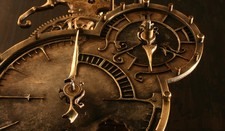 It’s the same with hi-fi: Even though the vast and overwhelming majority of what we hear when we listen to our music is the sound actually produced by our System (and the room that it’s playing in), and even though the better the System, the better the room, and the better the recording are, the less of what we hear we’ll have to supply from our own imagination, even the very best System and the very best recording playing in the very best room will still benefit from a little help from our imagination.
It’s the same with hi-fi: Even though the vast and overwhelming majority of what we hear when we listen to our music is the sound actually produced by our System (and the room that it’s playing in), and even though the better the System, the better the room, and the better the recording are, the less of what we hear we’ll have to supply from our own imagination, even the very best System and the very best recording playing in the very best room will still benefit from a little help from our imagination.
That’s NOT to say that audio “tweaks” and all of the other things (including amplifiers, cables, cleaning and anti-static products, green pens [yes, really] and practically everything else) that at one time or another, have been doubted or attacked by those who couldn’t (or refused to) hear their effect really ARE imaginary and that the trolls have been right the whole time. Instead, it’s just to remind us that it’s ALL an illusion; that there AREN’T any musicians in our room; that we aren’t in theirs; and that none of those things are really necessary for us to have a great time listening.
Let’s try to remember what we’re doing here!
